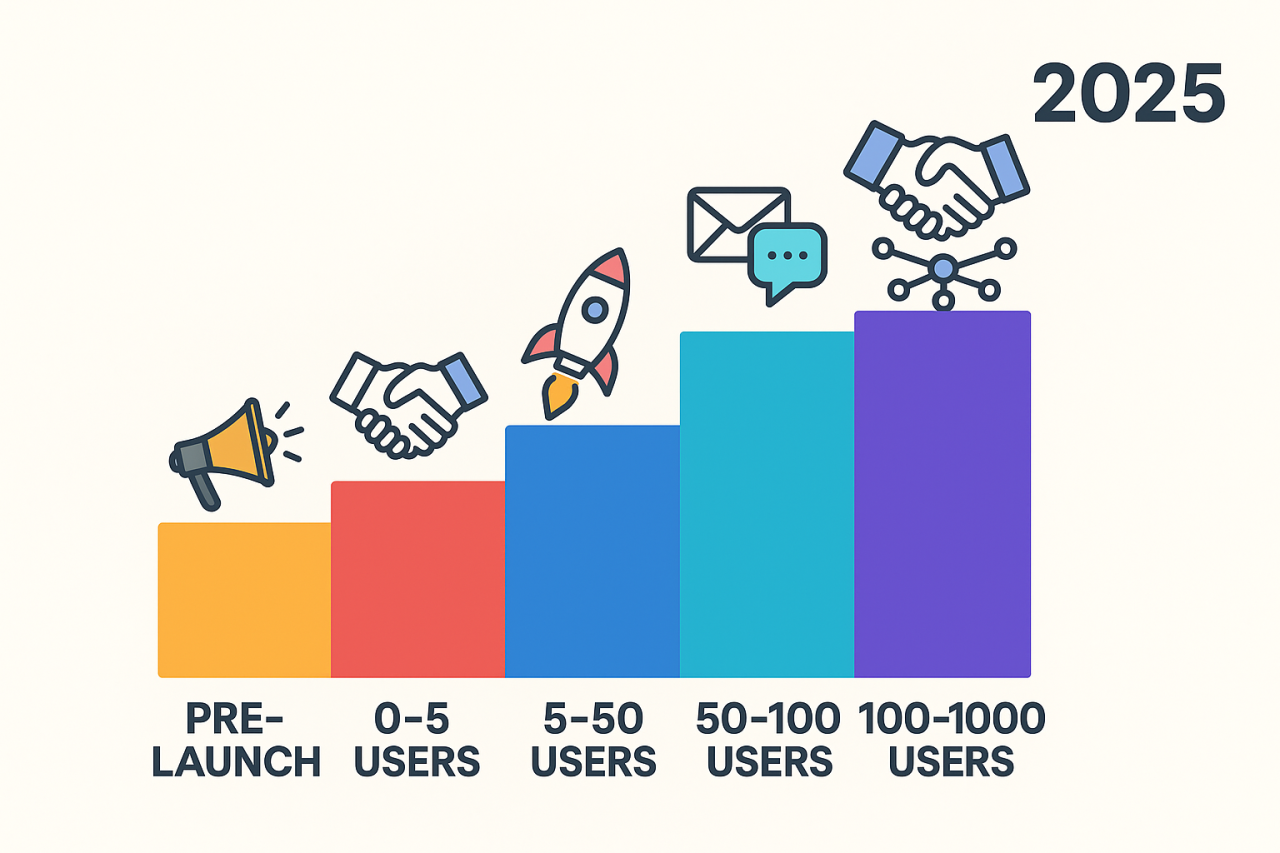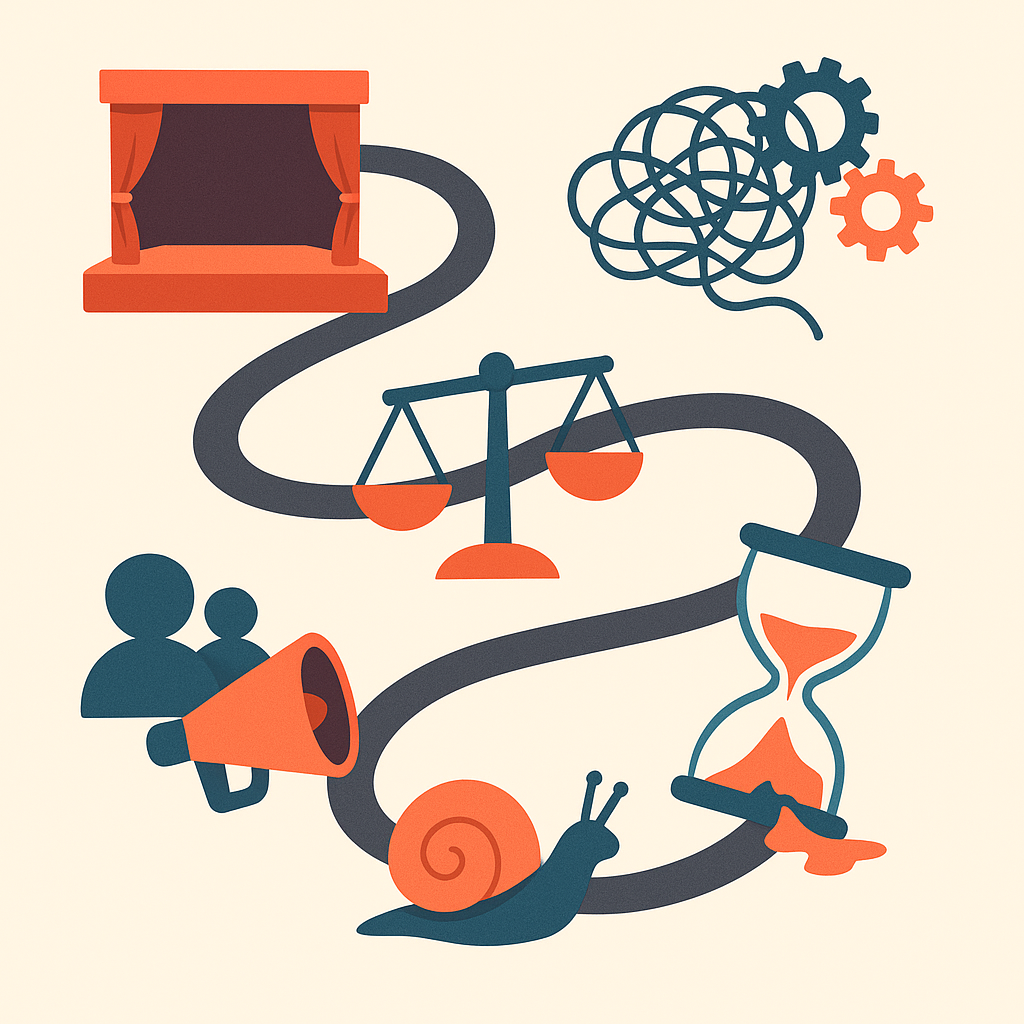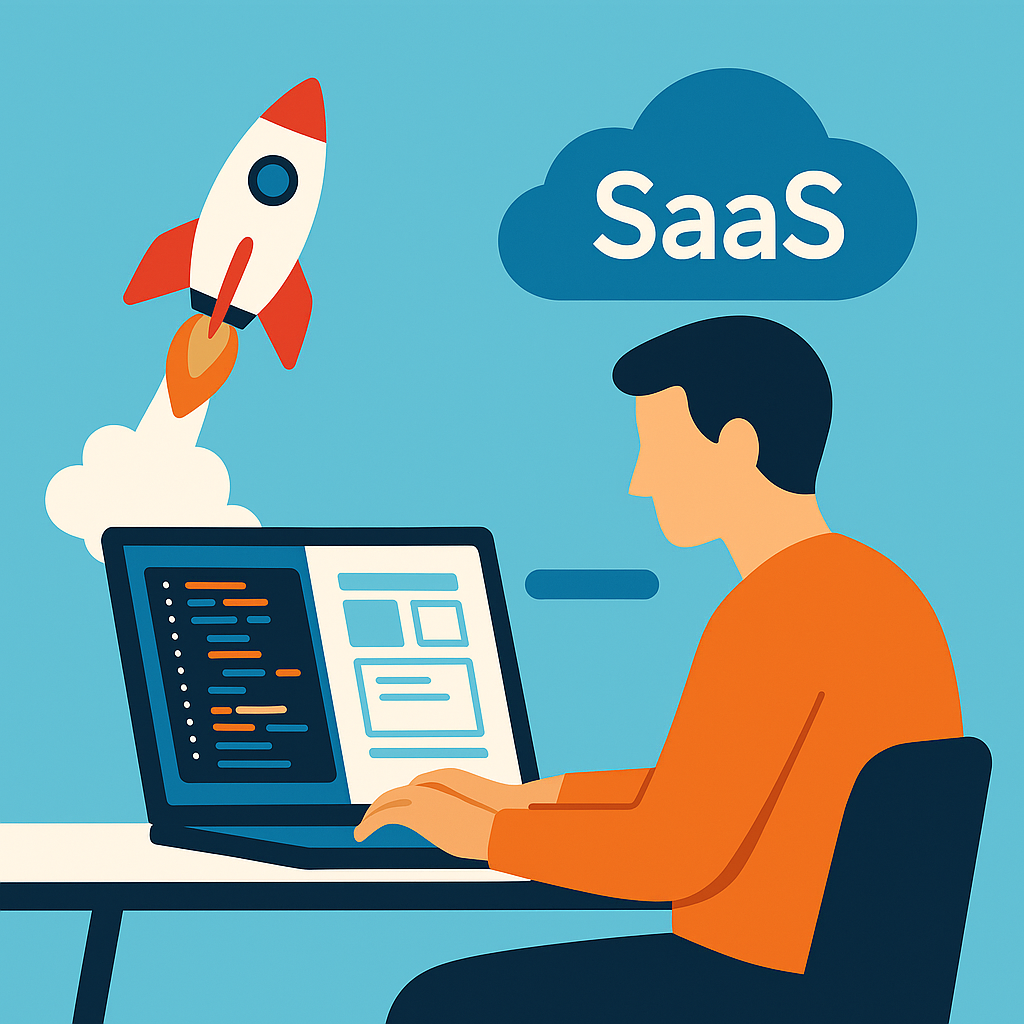In the competitive world of Software-as-a-Service (SaaS), reaching the milestone of 1,000 customers is far from guaranteed. In fact, most startups never get there. Many promising SaaS products stall out with only a handful of users, not because the product lacks features or cutting-edge technology, but because it never found the right audience. The key mistake that derails these companies is poor targeting – building for an ill-defined or overly broad user base – rather than an absence of functionality. Founders often pour energy into adding features, believing more functionality will magically attract users, when the real challenge is getting the product in front of people who truly need it. To break past this growth barrier, it’s critical to shift focus away from feature checklists and toward understanding your audience and crafting a smart customer acquisition strategy. In other words, success hinges more on who you’re building for and how you reach them than on what you build.
May 09 2025 • 17 min read • 3277 words
From 0 to 1,000 Customers: How to Reach 1,000 Customers for Your SaaS Platform

Preparation: Building an Audience Before the Product
It might sound counterintuitive, but the road to 1,000 customers begins long before you even have a product to sell. The preparation phase is about building credibility and an audience for your future SaaS. Smart founders use the months (or even years) before launch to cultivate a personal brand and a following of people who trust them. By the time you have a minimum viable product (MVP) ready, you don’t want to be introducing yourself to the market from scratch – you want a group of potential users already paying attention.
Choose a platform for audience-building based on your strengths and where your prospective customers hang out. If you’re a strong writer, start a blog or an email newsletter sharing valuable insights related to the problem your SaaS will solve. If you’re comfortable on camera, create informative YouTube videos or host webinars. Or if you prefer quick interactions, engage on Twitter (now X) or LinkedIn by posting industry tips and commentary. The specific platform matters less than offering consistent, genuine value. Importantly, provide value without overtly selling – share tips, how-tos, case studies, or industry trends that help people. For example, if you plan to build a project management tool for remote teams, you might blog about remote work productivity hacks or share a free template for organizing tasks. This kind of content attracts people interested in your domain and positions you as a helpful expert rather than a salesperson.
Over time, as you freely share knowledge and help your audience solve small problems, you’ll earn their trust and goodwill. That trust becomes your secret weapon when you finally unveil your product. Instead of launching to crickets, you can announce your MVP to an audience that already respects your expertise and is keen to support you. It’s like having a built-in pool of beta testers and early customers eagerly waiting to try what you’ve been working on. Founders who “build in public” on social media often demonstrate the power of this approach: by the time they launch, they have thousands of followers invested in their journey, resulting in immediate sign-ups and feedback. The takeaway is clear: audience first, product second. Focus on nurturing a community and personal brand early on, and you’ll have a strong foundation to accelerate out of the gate when your product is ready.

First Steps: Getting the First 5 Users
With a small but engaged audience forming, the next challenge is securing those elusive first few users for your SaaS. Early users are incredibly important – they provide the initial real-world validation that someone finds your solution valuable. The goal at this stage is modest but crucial: get your first 5 users (and ideally paying customers) who are not just friends or family. Avoid relying on biased feedback from friends. It’s tempting to have friends, colleagues, or relatives try your product and tell you it’s great, but that feedback is inherently sugar-coated. Instead, seek out people who have no personal obligation to be nice – you want the truth, even if it hurts. Honest reactions from strangers in your target market will reveal whether your SaaS truly addresses a pain point they care about.
Start by tapping into the audience you built during the preparation phase. Let your followers or subscribers know you’re looking for beta users and invite them to try your MVP, perhaps with a free trial or an exclusive sneak peek. In parallel, go where your target users hang out online – join those niche subreddits, forums, or LinkedIn groups relevant to the problem you solve.
**Participate genuinely:** ask open-ended questions about the challenges people are facing (without immediately pitching your product) and listen carefully. Their candid responses will tell you whether the pain point you address truly resonates and may even hint at what kind of solution they’d embrace.
Also, take time to research your competitors and how potential customers are solving this problem currently. Understanding the alternatives – be it other software or DIY workarounds – helps you refine your value proposition and anticipate objections. Armed with insights from these community interactions and competitor research, begin reaching out directly to a few individuals who have expressed frustration with the status quo. Send a personal message or email explaining that you’re working on a solution to their problem and offering them early access. Make it clear that you value their feedback and insights as you refine the product.
Aim to get about five engaged users testing your MVP. Even if they aren’t paying yet (maybe they’re on a free trial or a beta invite), treat them like gold. Personally guide them through onboarding, be available to answer questions, and check in regularly to gather feedback. Watch how they actually use the product and note where they get confused or drop off – those insights are invaluable for improving your service. If one or two of these early users actually pull out a credit card and pay for your SaaS, you’ve reached a major milestone. That’s concrete proof that you’re solving a problem worth paying for – a moment worth celebrating, given that many startups never get even a single paying customer. With a core group of real users now on board (and ideally a couple of them paying), you have a solid foundation of validation and can begin ramping up your growth efforts with greater confidence.
From 5 to 50 Customers: Refining Product-Market Fit
Once you have a handful of real users (and even a few dollars of revenue), the next milestone is to grow from 5 to 50 customers. This stage is all about validation and refinement. You’ve proven some people want your solution; now you need to confirm that many more will. It’s time to open up your product to a wider audience with a solid minimal viable product (MVP) that addresses the core problem. Resist the urge to cram in every feature idea – stick to the functionality that made those first users excited. For example, if your early adopters loved your analytics tool’s real-time dashboard but didn’t care about the weekly PDF report, focus on perfecting the dashboard and put the report on hold. Solve one problem extremely well rather than many problems poorly.
With a reliable MVP in hand, start targeting a specific niche for your next wave of customers. Narrow your focus to a particular segment where the pain point is especially intense. By being laser-specific, your message will cut through the noise and resonate deeply. Rather than marketing a “project management tool for everyone,” present it as “project management for freelance designers” (if designers were among your most enthusiastic early users). This way, those who come across it will feel it’s tailor-made for them – because it is. Early on, it’s far better to be highly relevant to a small group than vaguely appealing to a broad audience. Becoming the go-to solution for a tight-knit category of users gives you a strong beachhead from which you can later expand.
As you onboard these new users, actively collect feedback and iterate. The needs and impressions from 5 users might evolve once you have 20 or 30 using your app in real-world scenarios. Make it easy for customers to send feedback – via an in-app prompt, a quick survey, or personal emails – and pay close attention to recurring themes. If several people independently ask for a certain integration or complain about a similar friction point, take note. Each small improvement or fix you make now strengthens your product-market fit. You’re validating that the problem you set out to solve is truly being solved in your customers’ eyes, and you’re fine-tuning the product to fit like a glove.
Meanwhile, continue to engage in the niche communities where your target users hang out. This grassroots marketing remains vital as you approach 50 customers. If a particular subreddit, industry forum, or Discord group has yielded good users, keep contributing there genuinely. Over time, you’ll become recognized as “that person who knows a lot about the problem. When people ask questions or discuss issues that your SaaS addresses, that’s your chance to mention how you tackle it (without spamming). By now you might also have a couple of short testimonials or success stories from initial customers – weave those into conversations or share them on social media. Hearing that “X solved this exact issue for someone like me” can tip interested lurkers into becoming new users. The journey from 5 to 50 customers won’t be marked by explosive growth, but it will give you something more important: proof that there is a real, repeatable market for your product beyond just a few friendly early adopters. You’re demonstrating that you know how to find and satisfy customers in your niche.
From 50 to 100 Customers: Building Traction and Trust
Reaching 50 customers is a strong signal that you’ve found a niche that truly values your product. The challenge now is to leverage this base to reach the next tier: 100 customers. These next users will serve as a bridge to broader adoption, so step up your marketing a notch while keeping current users happy (their word-of-mouth is still powerful).
One effective tactic at this stage is to nurture your audience via email and social media. By now, you should have a mailing list of early sign-ups, trial users, and customers. Keep in touch with them through a simple regular update. Share product news, tips for getting more out of your software, and short success stories from those first 50 users. This keeps your solution on their radar and reinforces a sense of community. On social media, continue providing valuable industry content, but start weaving in highlights of your product’s journey or customer wins. For example, a quick post like, “50+ freelance designers now organize projects with [ProductName] — feeling grateful for all the feedback!” both thanks your users and signals to prospects that peers trust your tool.
At the same time, double down on content creation that addresses your customers’ problems. Identify common questions or challenges your ideal user has, and publish genuinely helpful content offering solutions. If your SaaS is an SEO tool for small businesses, you might write a guide on “5 Free Ways to Improve Local SEO” or create a short video on basic search optimization tips. By helping your target audience with useful information (without immediately selling), you attract them to your website and build credibility. Some of those readers or viewers will then discover that you offer a product to solve the exact problem they’re researching, which can lead to organic sign-ups. Over time, this kind of content marketing creates a steady pipeline of warm leads as more people find your articles, share them, and come to trust your expertise.
With community engagement and content bringing in leads, you can also experiment with small-scale paid advertising to reach beyond your immediate circles. Allocate a modest budget – even a few hundred dollars – to test ads where your niche audience spends time. This could be a targeted Google search ad, a sponsored blurb in a niche newsletter, or a LinkedIn ad aimed at a specific job title. Use these campaigns to test your messaging. Try two or three variations of ad copy or landing page that each highlight a different benefit, and see which one pulls better results. Perhaps one message promises “Save 5 hours a week on accounting” while another offers “All your invoices in one place.” If one clearly attracts more clicks or sign-ups, you’ve learned what pain point resonates most. Those insights help you refine not just ads but all your marketing to speak directly to what matters to customers.
By the time you approach the 100-customer mark, you should have a clearer picture of your growth engine. You’ll know which content topics draw interest, which marketing messages convert best, and which channels (community forums, social media, email, or ads) yield the most engaged users. You’ll also have a core community of users who are turning into advocates. This momentum is critical: it means you’ve moved beyond relying solely on personal outreach and now have multiple channels working to bring in new users. Hitting 100 customers is solid proof that you’ve built something people want, and it gives you a strong foundation to scale up in the next phase.
From 100 to 1,000 Customers: Scaling Up Growth
Crossing 100 customers is a significant achievement, but going from 100 to 1,000 customers presents a whole new set of challenges. At this scale, you need to combine the scrappiness of your early tactics with more scalable growth strategies. The foundation you’ve built – a solid product, a passionate niche user base, and a trusted presence in your space – will now support bigger growth initiatives. Here are some approaches to multiply your customer count tenfold in a sustainable way.
One powerful approach is leveraging partnerships and integrations to tap into new audiences. Consider which products, platforms, or influencers already reach your ideal customers, and find ways to collaborate. For example, integrating your SaaS with a popular tool in your industry can expose you to that tool’s user base. Being listed on a major app marketplace (like Shopify’s App Store or Slack’s directory) puts your product in front of users actively seeking solutions and adds credibility by association. Beyond technical integrations, look for co-marketing opportunities: team up with a complementary service for a joint webinar, a guest blog exchange, or a bundled offer. Each partner can promote the collaboration to their own audience, effectively sharing audiences with minimal cost. Such partnerships allow you to piggyback on established communities and trust networks, dramatically extending your reach without traditional advertising.
Another key lever from 100 to 1000 customers is a well-designed referral program. Your existing happy customers can become a potent growth engine if you give them an easy way to recommend your product. Create incentives that reward both the referrer and the new customer – for instance, a discounted month or added features for each successful referral. This encourages users to spread the word in their professional circles. Many SaaS businesses have grown exponentially thanks to referrals powering word-of-mouth. The goal is to turn customer enthusiasm into a tangible invitation that brings in others like them. Make the referral process seamless (a simple link or invite button) and occasionally remind users about it through in-app messages or emails. Even a modest referral uptake can significantly lower your customer acquisition cost and bring in highly qualified leads (people tend to refer colleagues or friends who genuinely need the solution).
To cast an even wider net, consider limited-time offers and deal platforms. Running occasional promotions (like a temporary discount or an extended free trial) can attract fence-sitters who have been considering your product. Additionally, listing your SaaS on a deal marketplace – for example, offering a lifetime deal or steep discount on platforms such as AppSumo – can generate a surge of new users. This strategy should be used carefully, since deal-hunters might not all convert to long-term full-paying customers. However, it’s an effective way to boost your numbers, get a burst of user feedback, and increase awareness. It also helps you gauge price sensitivity: if significantly more users jump on board at a lower price, you’ve learned something important about your pricing model or value communication. Ensure you provide excellent support to users from these promotions so they become advocates rather than just one-time bargain seekers.
And I have more, read below:
Premium content
Log in to continue
You might like

Users vs. Customers in SaaS: Understanding the Difference and Driving Conversions
May 08 2025
Avoidable Tech Startup Mistakes: Six Pitfalls to Dodge
May 10 2025
The Broke Shopper’s Paradox—and What SaaS Makers Should Know
May 09 2025
Stop Building Blind: Why You Need to Know Your Niche Before Building a SaaS
May 22 2025